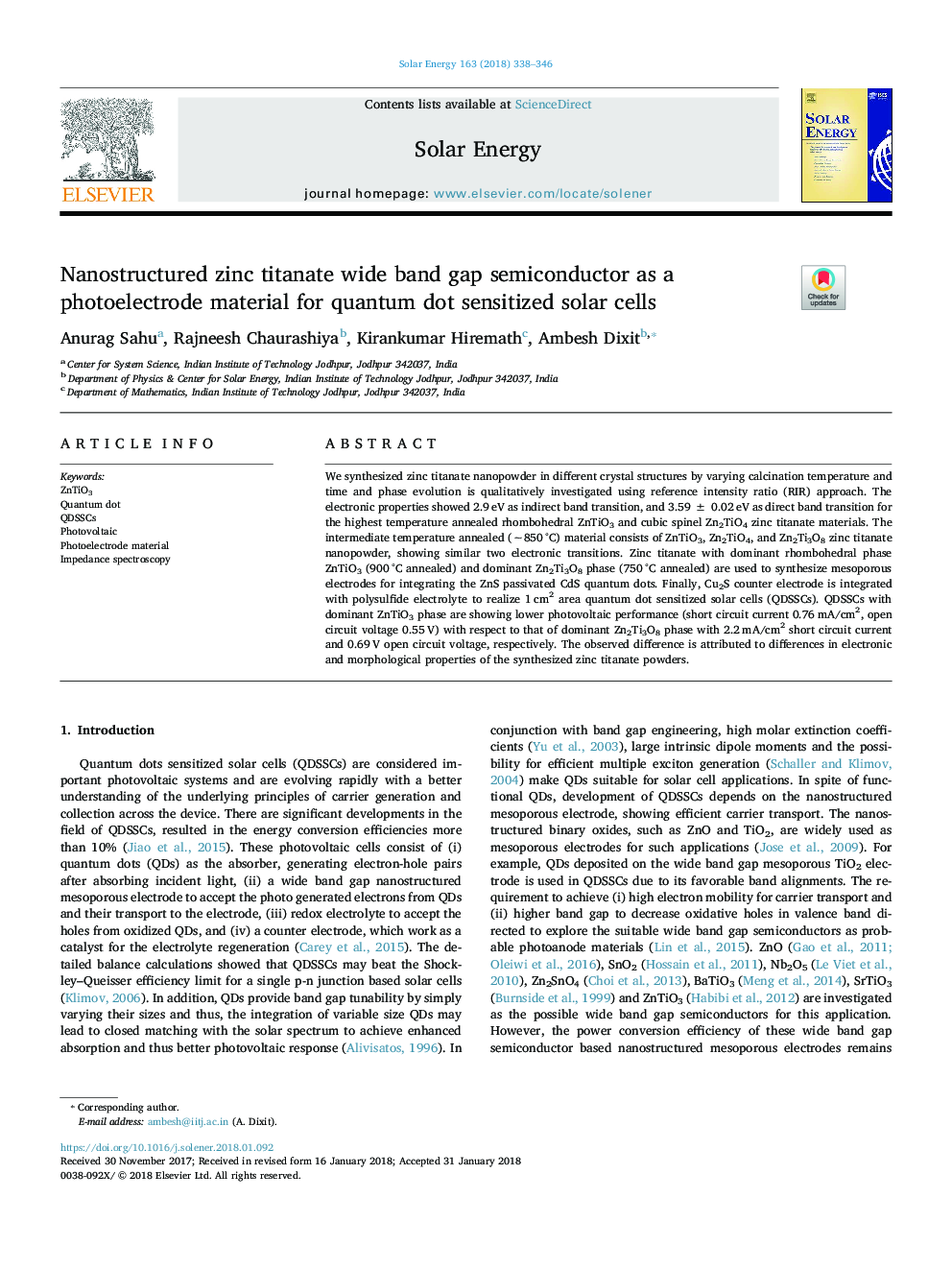| Article ID | Journal | Published Year | Pages | File Type |
|---|---|---|---|---|
| 7935546 | Solar Energy | 2018 | 9 Pages |
Abstract
We synthesized zinc titanate nanopowder in different crystal structures by varying calcination temperature and time and phase evolution is qualitatively investigated using reference intensity ratio (RIR) approach. The electronic properties showed 2.9â¯eV as indirect band transition, and 3.59â¯Â±â¯0.02â¯eV as direct band transition for the highest temperature annealed rhombohedral ZnTiO3 and cubic spinel Zn2TiO4 zinc titanate materials. The intermediate temperature annealed (â¼850â¯Â°C) material consists of ZnTiO3, Zn2TiO4, and Zn2Ti3O8 zinc titanate nanopowder, showing similar two electronic transitions. Zinc titanate with dominant rhombohedral phase ZnTiO3 (900â¯Â°C annealed) and dominant Zn2Ti3O8 phase (750â¯Â°C annealed) are used to synthesize mesoporous electrodes for integrating the ZnS passivated CdS quantum dots. Finally, Cu2S counter electrode is integrated with polysulfide electrolyte to realize 1â¯cm2 area quantum dot sensitized solar cells (QDSSCs). QDSSCs with dominant ZnTiO3 phase are showing lower photovoltaic performance (short circuit current 0.76â¯mA/cm2, open circuit voltage 0.55â¯V) with respect to that of dominant Zn2Ti3O8 phase with 2.2â¯mA/cm2 short circuit current and 0.69â¯V open circuit voltage, respectively. The observed difference is attributed to differences in electronic and morphological properties of the synthesized zinc titanate powders.
Related Topics
Physical Sciences and Engineering
Energy
Renewable Energy, Sustainability and the Environment
Authors
Anurag Sahu, Rajneesh Chaurashiya, Kirankumar Hiremath, Ambesh Dixit,
